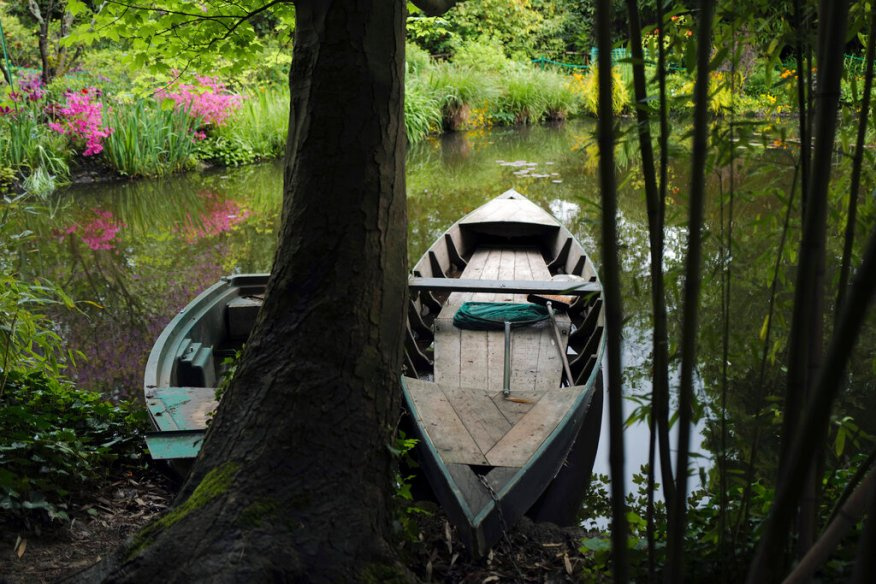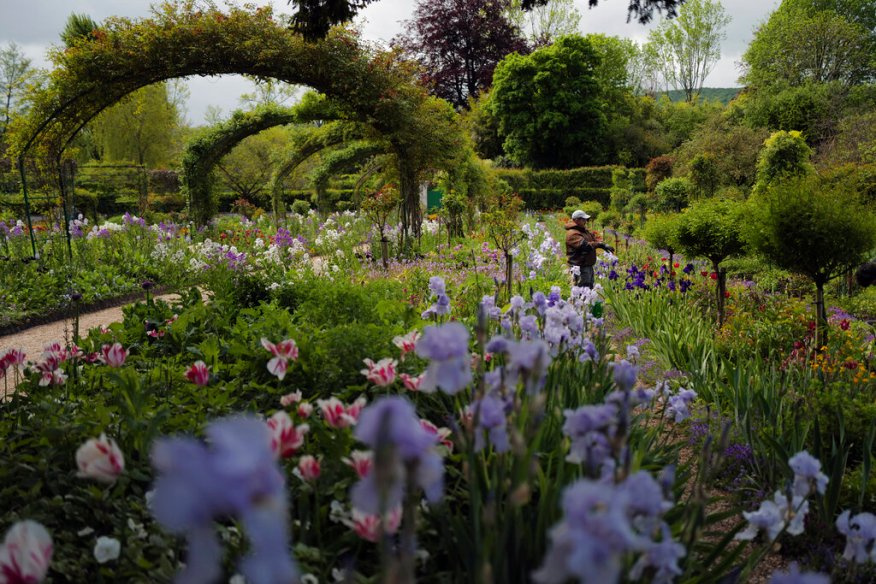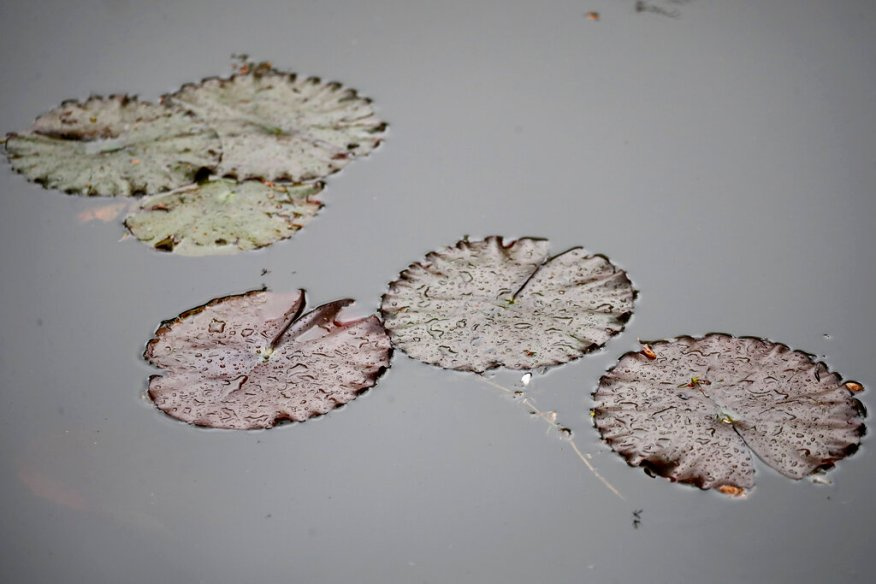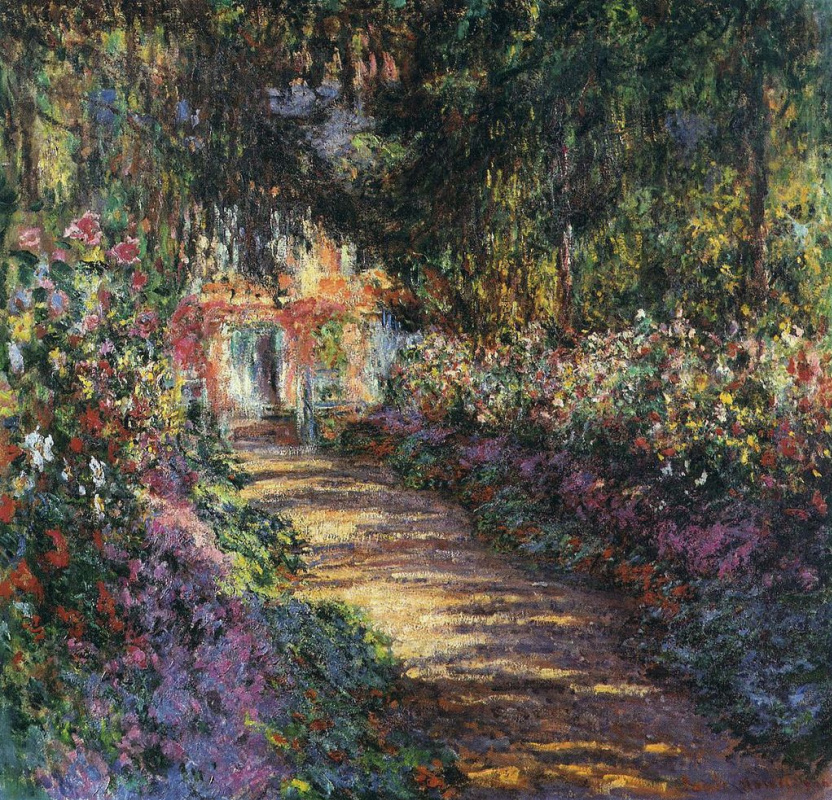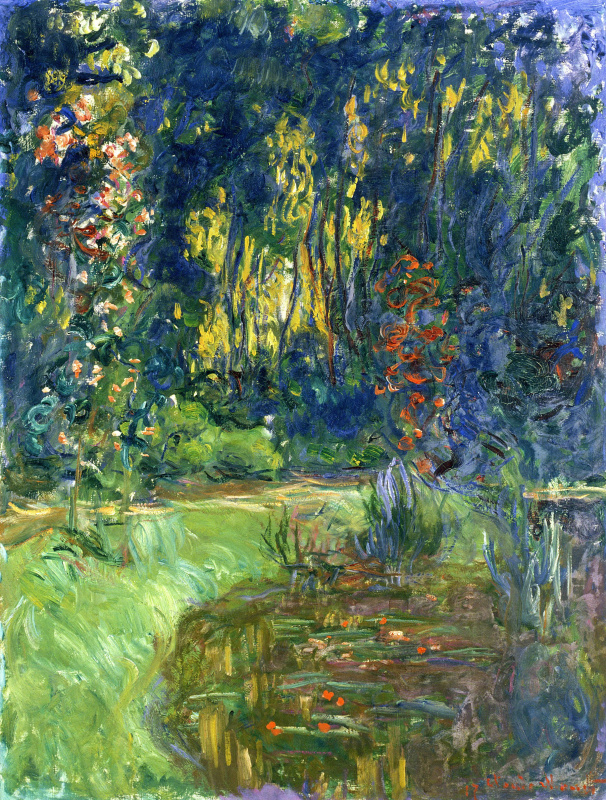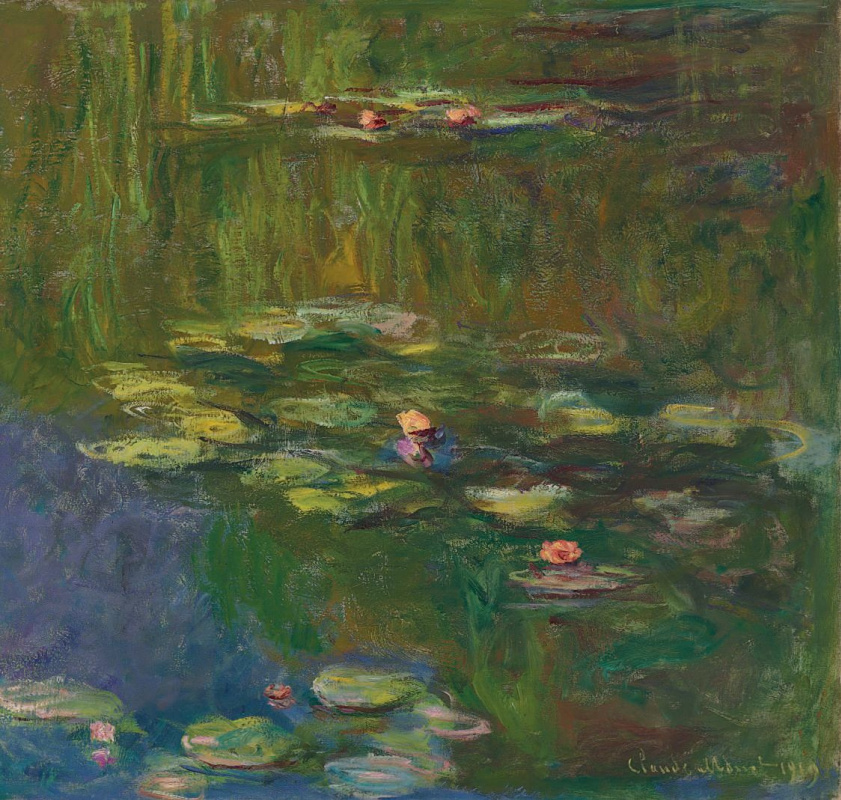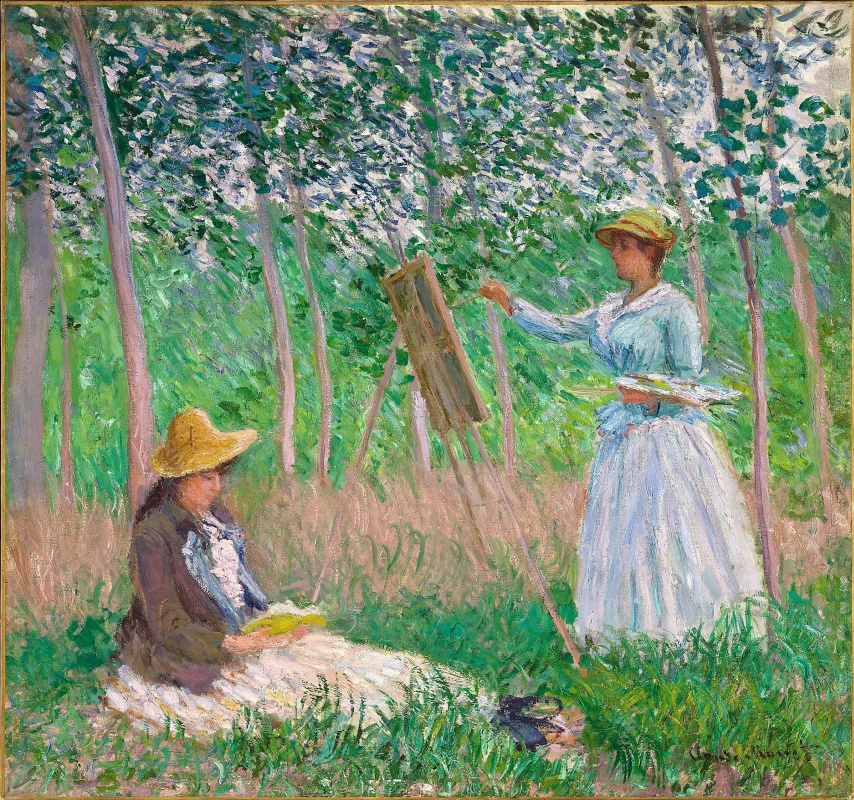After more than six months of inactivity, the gardens at Giverny were finally opened to the public, which inspired Claude Monet to create world-famous paintings of water lilies and other plants. The lawns with white and pink striped tulips, transparent peonies, sky blue forget-me-nots and many other flowers were the pride of the impressionist artist. They are still a living work of art thanks to the tireless care of gardeners.

The gardeners were very upset that they had no one to share their work with. "All this beauty only matters when it is seen. We did a lot of effort trying to recreate the paintings of the Impressionists," they say.
The splendour of Monet’s home and gardens was out of reach during the coronavirus pandemic — along with symphonies that no one could listen to or theatre performances that no one could watch. Now the gardens in Giverny, along with French cafés, restaurants, cinemas and museums, have opened the doors to visitors craving for social life.
Of course, the number of visitors is now limited — up to 200 people per hour, which is much less than usual (in 2019, before the pandemic, 717 thousand people visited Monet’s house and gardens in seven months). But this is a good start after months of hardship and restrictions. For now, we just have to look at the magnificent photographs of the gardens. At the same time, there is an opportunity to learn interesting facts about Giverny and its most famous inhabitant.
The splendour of Monet’s home and gardens was out of reach during the coronavirus pandemic — along with symphonies that no one could listen to or theatre performances that no one could watch. Now the gardens in Giverny, along with French cafés, restaurants, cinemas and museums, have opened the doors to visitors craving for social life.
Of course, the number of visitors is now limited — up to 200 people per hour, which is much less than usual (in 2019, before the pandemic, 717 thousand people visited Monet’s house and gardens in seven months). But this is a good start after months of hardship and restrictions. For now, we just have to look at the magnificent photographs of the gardens. At the same time, there is an opportunity to learn interesting facts about Giverny and its most famous inhabitant.
Nine facts about Giverny
Fact One. Claude Monet fell in love with Giverny in 1883. He passed by this village by train, but three years later he rented there a large house with a vegetable patch and a garden that occupied a hectare. He moved to the new place with his two sons, his second wife Alice Hoschedé and her six children from her first marriage. The artist lived in this house for almost 43 years and was buried in 1926 at the Church of St. Radegonda.
Fact Two. Arranging the estate called Clos Norman to his liking, Monet removed the boxwood and after much debate with Alice he cut down the spruce. He decorated the central path with nasturtiums and climbing roses, and instead of conifers he planted apple trees, cherries and apricots. Tulips, irises, daffodils, rhododendrons, delphiniums, phloxes, chrysanthemums, poppies, peonies and other flowers appeared on the lawns around the house. The artist did not like flower beds, so the plants covered the emerald lawns with fancy mosaics.
Fact Two. Arranging the estate called Clos Norman to his liking, Monet removed the boxwood and after much debate with Alice he cut down the spruce. He decorated the central path with nasturtiums and climbing roses, and instead of conifers he planted apple trees, cherries and apricots. Tulips, irises, daffodils, rhododendrons, delphiniums, phloxes, chrysanthemums, poppies, peonies and other flowers appeared on the lawns around the house. The artist did not like flower beds, so the plants covered the emerald lawns with fancy mosaics.
The path through the garden at Giverny
1902, 89×92 cm
Monet studied flower catalogs of large French nursery gardens. He also occasionally read the English Rural Life magazine, which depicted the houses and gardens of the British aristocracy. Friends who visited him, including Pissarro, Matisse, Cézanne, Manet and Renoir, often brought rare seeds to his colleague.
Fact Three. Over time, Claude Monet became famous and wealthy. He bought the house and decided to expand the garden. The artist obtained permission from the Giverny authorities to purchase an adjacent swampy area for a pond, and also to divert a canal for it from a local stream. All this was accompanied by high-profile scandals with the municipality and local residents, but the stubborn painter eventually won.
Fact Three. Over time, Claude Monet became famous and wealthy. He bought the house and decided to expand the garden. The artist obtained permission from the Giverny authorities to purchase an adjacent swampy area for a pond, and also to divert a canal for it from a local stream. All this was accompanied by high-profile scandals with the municipality and local residents, but the stubborn painter eventually won.
Japanese Bridge (Water Lily Pond, Symphony in Pink)
1900, 89.5×100.5 cm
The famous Nympheas water lilies that Monet later captured in his canvases were planted in the pond by a gardener from Japan. And so that the fallen leaves do not spoil the ideal beauty of the reservoir, a special person sailed through it on a boat every day, carefully picking out all the garbage. This is the case now.
It is also said that the gardener on the boat wiped the lilies from the soot that came from the local railway line. Or that Monet paid to pave the nearby road when he noticed dust on his flowers. But these legends are unconfirmed.
It is also said that the gardener on the boat wiped the lilies from the soot that came from the local railway line. Or that Monet paid to pave the nearby road when he noticed dust on his flowers. But these legends are unconfirmed.
Fact Four. The Clos Norman Garden contains 66 different types of trees and flowers, including the common ones such as pansies, snowdrops, cacti and oriental poppies. The magnificent pond is surrounded by 31 different plant species. The most notable of these are bamboo and water lilies, but there are also ginkgo biloba, maples, weeping willows, Japanese quince and raspberry bushes. In the days of Monet, seven gardeners took care of all this greenery riot, now there are 11 of them.
The lawns are separated by many small paths. And the vegetation in some places was so high that the walkers could immerse themselves in the world of flora, barely making out the sky overhead.
Fact Five. When Monet began to go blind, he reproduced his gardens almost from memory. Cataracts in both eyes greatly affected his work. One art critic noted that later paintings "bordered on abstraction, colours flowed into each other and there were no rational forms and perspectives". The artist had to sign the paint tubes to avoid confusing colours.
The lawns are separated by many small paths. And the vegetation in some places was so high that the walkers could immerse themselves in the world of flora, barely making out the sky overhead.
Fact Five. When Monet began to go blind, he reproduced his gardens almost from memory. Cataracts in both eyes greatly affected his work. One art critic noted that later paintings "bordered on abstraction, colours flowed into each other and there were no rational forms and perspectives". The artist had to sign the paint tubes to avoid confusing colours.
At the age of 82, he nevertheless decided to undergo surgery on one eye, and after that he destroyed hundreds of his paintings, claiming that "they were impossible to look at". Later, Monet created a number of outstanding masterpieces, some of which resemble his early works.
Fact Six. After the artist’s death, the entire Clos Norman estate passed to his youngest son Michel. However, he did not live in Giverny, and his half-sister Blanche Hoschedé Monet became the caretaker of the house and gardens. She was a student of her stepfather and the widow of his eldest son Jean. Most likely, it was Blanche who helped the artist in the last stages of the creation of the Grand Decor, a panoramic frieze with nymphs and wisterias, which is now in the Orangerie Museum. It is difficult to imagine that the elderly and poorly seeing Claude Monet could independently make canvases of such a scale.
Fact Six. After the artist’s death, the entire Clos Norman estate passed to his youngest son Michel. However, he did not live in Giverny, and his half-sister Blanche Hoschedé Monet became the caretaker of the house and gardens. She was a student of her stepfather and the widow of his eldest son Jean. Most likely, it was Blanche who helped the artist in the last stages of the creation of the Grand Decor, a panoramic frieze with nymphs and wisterias, which is now in the Orangerie Museum. It is difficult to imagine that the elderly and poorly seeing Claude Monet could independently make canvases of such a scale.
In the woods at Giverny
1887, 91.4×97.8 cm
Fact Seven. In February 1966, Michel Monet, an avid racer, died in a car accident a few weeks before his 88th birthday. Shortly before that, he bequeathed his father’s estate to the Academy of Fine Arts. By that time, it had fallen into decay, the garden was full of weeds, and the art of the Impressionists went out of fashion. It is therefore not surprising that it took the Academy ten years to begin rebuilding them.
In 1976, Gerald van der Kemp was invited for this. He oversaw the restoration of the palace of Louis XIV at Versailles, and during World War II hid the Mona Lisa from the Nazis in his own bedroom.
In 1976, Gerald van der Kemp was invited for this. He oversaw the restoration of the palace of Louis XIV at Versailles, and during World War II hid the Mona Lisa from the Nazis in his own bedroom.
Claude Monet, Water-Lily Garden with Weeping Willow (1919). Marmottan Monet Museum, Paris
Fact Eight. Little was known about Monet’s garden at that time, and none of the plants he had planted survived. The restorers spoke with those who remembered the original estate, looked for rare photographs, studied the records of nurseries that supplied plants to the artist, and read his letters. But most of all they looked at the pictures.
It took four years to bring the garden back to life. It was expected that in the opening year, about seven thousand people would visit the estate. However, the reality ten times exceeded expectations: more than 70 thousand visitors wanted to see the living creation of Monet and his followers.
Fact Nine. You can live in the Monet estate for some time. Although, not in the artist’s residence, but in the Blue House, which he provided to visiting friends. The painter also planted a garden and a veg patch around the house, and now anyone can feel like visiting Monet. The house has three bedrooms and three bathrooms, two living rooms and a kitchen. The cost of accomodation of one person for two days includes rent, cleaning, maintenance and taxes and equals to 639 euros.














